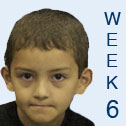Base Sentences
The generic sentence type is usually referred to as base sentence, also known a statement. This BASE serves as the foundation for other types of sentences through changes in its basic pattern; thus, all sentence types deriving from it are considered transformations of the base sentence.
The main types of base sentences are:
Declarative
The declarative sentence is the most common. Entire essays or reports are often written using only declarative sentences. A declarative sentence simply states a fact or argument, without requiring either an answer or action from the reader. There are two types of declarative sentences:
- positive or affirmative: Ottawa is the capital of Canada.
- negative: The heroism displayed by the firefighter does not surprise me.
Exclamation
An exclamatory sentence is simply a more forceful version of a declarative sentence marked at the end with an exclamation mark. Exclamatory sentences are common in speech and (sometimes) in fiction, but over the last 200 years they have almost entirely disappeared from academic writing except when quoting something else directly.
The butler did it!
How beautiful this river is!
Command or Imperative
A command is an imperative sentence that gives a direct command to someone; this type of sentence can end either with a period or with an exclamation mark, depending on how forceful the command is. There are mainly two types of commands:
- Exclusive command (excludes the speaker): Please, bring me my laptop.
- Inclusive command (includes the speaker): Let’s all go together!
*This last sentence, though considered a command in form, is mainly used as an invitation rather than an “imperative order.”
The command is the only sentence type in English that does not have an explicit subject. The subject is always implicit, YOU, since all orders are only given from 1st to 2nd person, and the verb remains in simple form.
Questions
The interrogative sentence has the function of asking or corroborating information. It always has a question mark at the end. There are two major types:
- Wh questions (also known as information question): Where does the new teacher do her planning?
- Yes/No questions: Should the new teacher come to the meeting?
Other common questions are:
- Tag questions: You saw it, didn’t you?
- Alternative questions: Do you want cream or milk?
- Rhetorical questions: Isn’t she lovely?
- Declarative questions: You live near the school?
Of all sentence types shown above, the question is the most difficult for ELLs. It is in this type of sentence where most mistakes are made. Most English questions use a helping verb or auxiliary ( where do you live?) while most ELLs’ first language lack this element.








